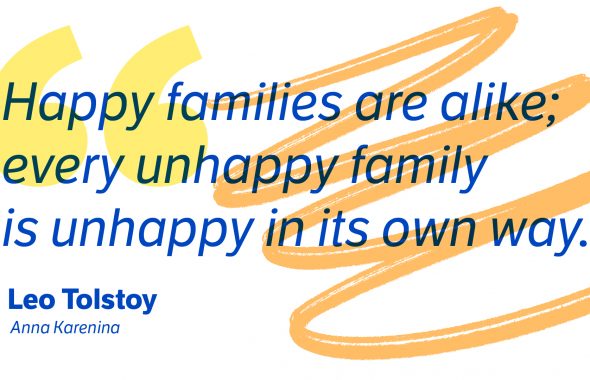When it comes to spelling out numbers, knowing when and how to do so correctly might be trickier than you imagine. Many organizations and publications have their own style guides describing when and how to spell out numbers, but there are some general guidelines you can keep in mind when digits pop up in writing.
Typically, you should spell out numbers below 10. Numbers over 10 should be represented in numerals—e.g., 53— unless the number is at the beginning of the sentence. You should try to avoid starting a sentence with a number, but if it can’t be avoided, it should be spelled out. These are the two most important rules. Read on to learn more tricks for correctly spelling out numbers.
How to spell 40: fourty or forty?
The number four and its various iterations follow an irregular pattern. For the number 14, it follows the general rule: 14 is spelled fourteen (-teen is a suffix denoting 10).
When it comes to the number 40, you would think it would be spelled fourty (-ty is the suffix denoting multiples of ten). However, the U is dropped, meaning 40 is correctly spelled forty.
How to spell 15: fivteen or fifteen?
The number five and its related numbers are also tricky. In most instances, the V turns into a second F and the final E is dropped. For example: 15 is spelled fifteen (rather than fiveteen). 50 is spelled fifty, not fivety.
Finally, the ordinal number 5th is spelled fifth. (The suffix -th denotes ordinal numbers.)
How to spell 18: eightteen or eighteen?
As we noted before, -teen is a suffix that denotes 10. When combined with eight to form the number 18, the final T in eight is dropped. The number 18 is correctly spelled eighteen.
How to spell 9th: nineth or ninth?
The number nine drops the final E when combined with the suffix -th to form the ordinal number 9th, becoming ninth. However, this rule does not hold when combined with other suffixes: 19 is spelled nineteen and 90 is spelled ninety.
How to spell 12th: twelveth or twelfth?
Yes, we remember when we told you that the V at the end of five is turned into an F when combined with a suffix. But, for the number 12 (twelve), the rule is inverse; when combined with the suffix -th to form the ordinal number 12th, the word is spelled twelfth. The final V is turned into an F, and the final E in twelve is dropped.
When do you hyphenate numbers?
When it comes to spelling out large numbers, it can be tempting to hyphenate everything. We get it. But you really only want to hyphenate compound numbers between 21 and 99. A compound number is any number that is a combination of more than one number, such as 52 or fifty-two.
When do you spell out years?
The number of the year is typically written as a numeral, such as 2022. This is true even when the number is less than 10, like 6 CE. That said, if the year comes at the beginning of a sentence, you should write it out like other numbers. Like we do when saying the year aloud, it is typical to divide the first two digits and the second two digits into individual numbers. For example, the year 1982 would be written nineteen eighty-two. (Remember, we hyphenate compound numbers between 21 and 99.)
When it comes to years that end in 00, we represent this as hundred. So, the year 1200 would be written twelve hundred.
How to spell ½: one over two or one half?
Generally speaking, you want to represent fractions in digits when writing them out, as in 56/325. However, there are some important exceptions. First, when using common fractions such as ¼, ⅓, and ½, it is typical to write out the fraction. Remember, the numerator is expressed as a cardinal number and the denominator is expressed as an ordinal number. For example: ¼ would be written one fourth.
The biggest exception to these rules is ½, which is written one half and 2/2, which is written two halves.
What’s the difference between mean, median, and mode?
You may have noticed from the example of 2/2 that only the denominator is pluralized when the numerator is more than one, so ⅔ is written two thirds.
You do not need to include a hyphen when writing out a fraction but it is typical to do so when using it as an adjective attached to a noun, as in The glass was two-thirds full. You can include a hyphen or not when writing fractions, as long as you are consistent throughout the document.
When do you spell out decimals?
Generally, you will not need to spell out decimals when writing. However, if you do, the decimal point (.) is expressed as “point” and the numbers on the right of the decimal are expressed as independent numbers. For example, 2.25 would be written out two point two five, rather than “two point twenty-five.” This is very informal and should otherwise be avoided. Using numerals is fine for decimals.
Numbers are trickier than the Count led you to believe on Sesame Street, right? Hopefully this little guide will make it easier to follow the many rules (and exceptions to the rules) required for writing out numbers. To test your new knowledge, you can take our spell-that-number quiz here. Or if you need one more study session, review with the help of our flashcards and this word list.














